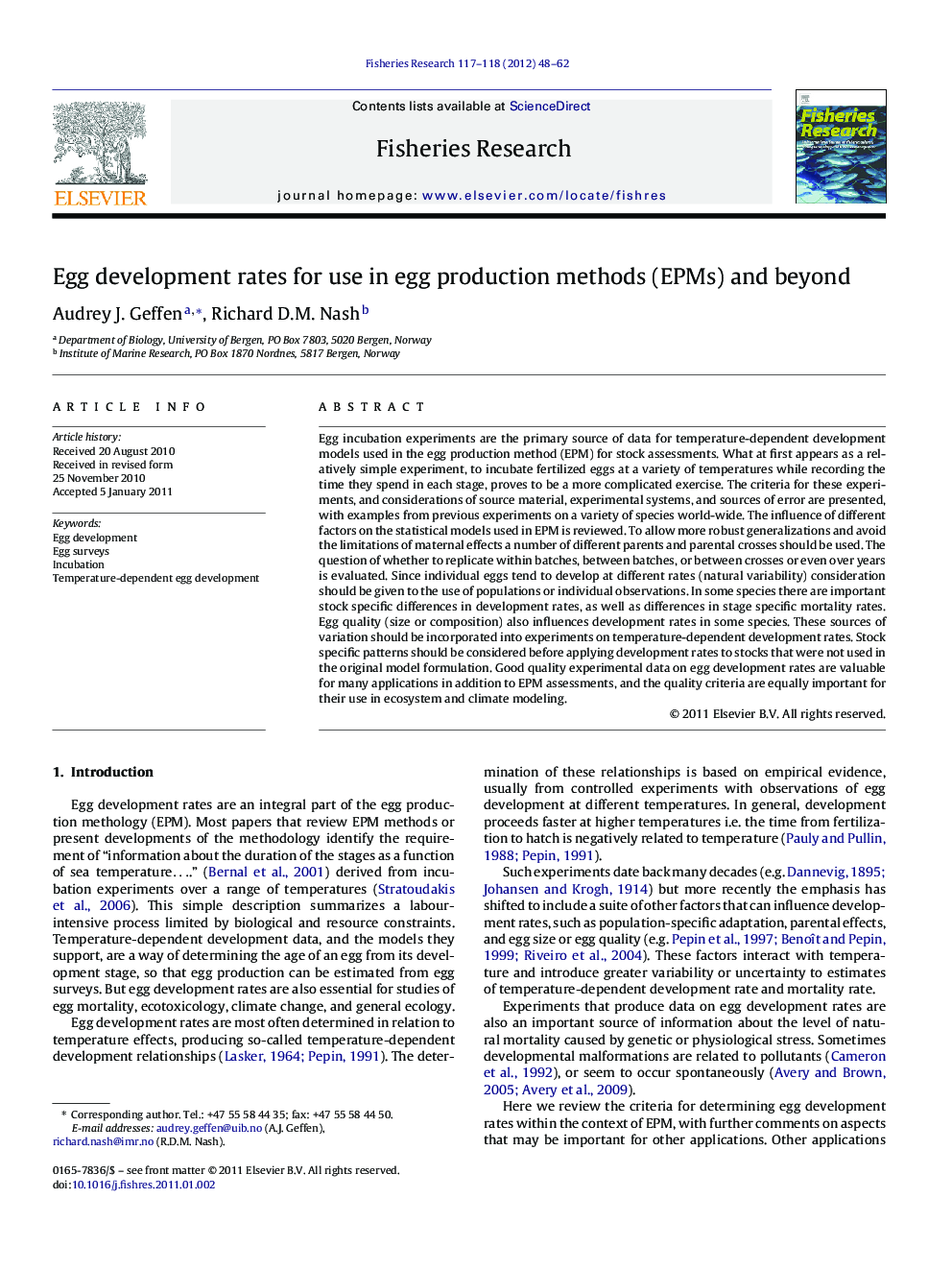| Article ID | Journal | Published Year | Pages | File Type |
|---|---|---|---|---|
| 4543481 | Fisheries Research | 2012 | 15 Pages |
Egg incubation experiments are the primary source of data for temperature-dependent development models used in the egg production method (EPM) for stock assessments. What at first appears as a relatively simple experiment, to incubate fertilized eggs at a variety of temperatures while recording the time they spend in each stage, proves to be a more complicated exercise. The criteria for these experiments, and considerations of source material, experimental systems, and sources of error are presented, with examples from previous experiments on a variety of species world-wide. The influence of different factors on the statistical models used in EPM is reviewed. To allow more robust generalizations and avoid the limitations of maternal effects a number of different parents and parental crosses should be used. The question of whether to replicate within batches, between batches, or between crosses or even over years is evaluated. Since individual eggs tend to develop at different rates (natural variability) consideration should be given to the use of populations or individual observations. In some species there are important stock specific differences in development rates, as well as differences in stage specific mortality rates. Egg quality (size or composition) also influences development rates in some species. These sources of variation should be incorporated into experiments on temperature-dependent development rates. Stock specific patterns should be considered before applying development rates to stocks that were not used in the original model formulation. Good quality experimental data on egg development rates are valuable for many applications in addition to EPM assessments, and the quality criteria are equally important for their use in ecosystem and climate modeling.
